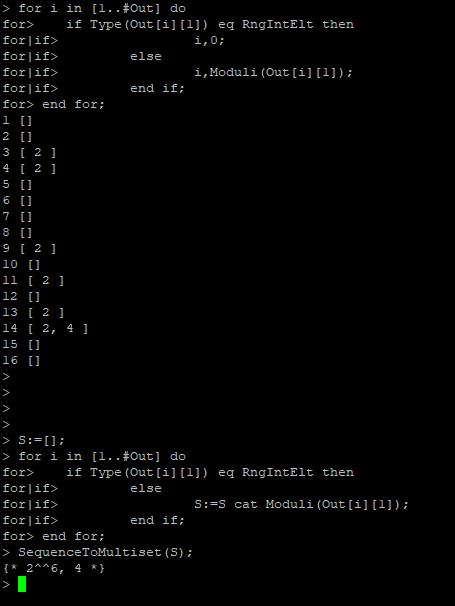Example
We compute $\mathcal{BC}_n(G)$ by two methods and take symmetric group $G=\mathcal{S}_5,n=2$ as an example.
Remark: the group $G$ is of type GrpPerm.
First, we compute $\mathcal{BC}_n(G)$ by definition:
- Open the magma code that computes group $\mathcal{BC}_n(G)$ by definition, copy all lines of code and paste in Magma.
- Let $G=\mathcal{S}_5, n=2$ and compute $\mathcal{BC}_n(G)$:
G:=SymmetricGroup(5); BC,FullLattice,QuoMap,Generators,IndSet2,RelationBase:=BrutalBC(G,2);

- The result is $\mathcal{BC}_2(G)=(\mathbb{Z}/2)^6 \times \mathbb{Z}/4$.

Then we compute $\mathcal{BC}_n(G)$ by decomposition:
Open the magma code that computes group $\mathcal{BC}_n(G)$ by decomposition, copy all lines of code and paste in Magma.
Compute $\mathcal{BC}_n(G)$:

- Type the following code:
for i in [1..#Out] do if Type(Out[i][1]) eq RngIntElt then i,0; else i,Moduli(Out[i][1]); end if; end for; S:=[]; for i in [1..#Out] do if Type(Out[i][1]) eq RngIntElt then else S:=S cat Moduli(Out[i][1]); end if; end for; SequenceToMultiset(S);
We see result:

- These two methods give the same result.